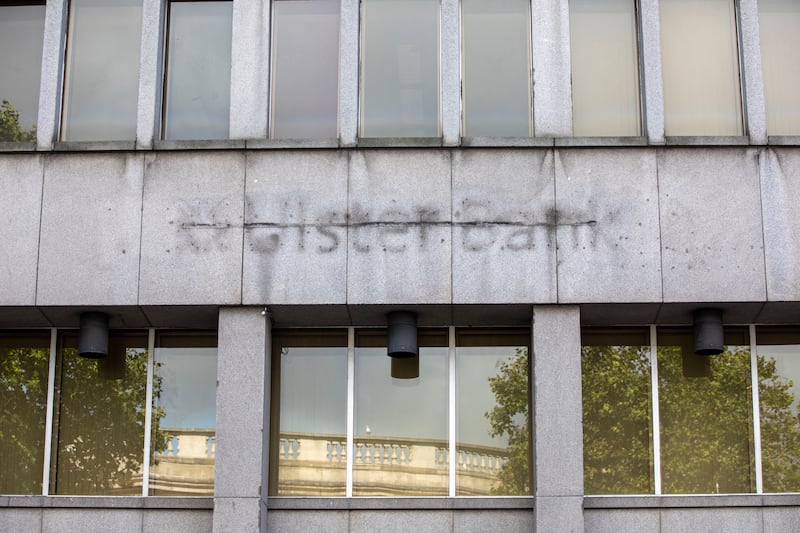Dublin City Council is considering buying one of the most prominent buildings on Dublin’s College Green, the former Ulster Bank, so it can be converted into social housing.
The bank, which dates from the 1890, with a large 1970s extension, was put on the market in recent weeks with a guide price of €13.5 million, as part of the portfolio of sales of the bank’s former branch network following its closure earlier this year.
More than 12,000 homes and commercial properties are vacant across Dublin, with 40 per cent empty for more than four years – putting them at significant risk of dereliction, a new analysis of data by The Irish Times revealed on Saturday.
Commenting on the coverage on Saturday, Minister for Housing Darragh O’Brien said the Government was considering an increase to the vacant homes tax in Budget 2024 as part of measures to combat the housing crisis.
A middle-class millennial at a Kneecap gig: am I just cosplaying at republicanism?
What should I do if my electric car breaks down?
Matt Williams: In cynical times, savour the new coaches who want to make the world a bit better
Political stupidity of Fianna Fáil four could see Ireland end up with a bottom-of-the-barrel job in Europe
The city council last October set up an “adaptive reuse” programme to convert vacant and derelict commercial buildings in the city to homes and has been “keeping an eye on the former Ulster Bank property portfolio”, programme manager Fiona Craven said.
In a briefing to councillors. Ms Craven said the council was “particularly interested” in the College Green branch. She acknowledged the building was “quite a large property [and] the acquisition cost would be very high” but she said it was particularly important to the council, as part of the property was a historic protected structure, and it had a prominent location on College Green, which the council plans to develop into a traffic-free civic plaza.
“We wouldn’t like to see the College Green project being completed and this building left vacant for a long term,” she said.

The council has yet to assess how many apartments it could secure within the building after conversion. A feasibility study prepared by Reddy Architecture + Urbanism, ahead of the property being offered for sale, suggested it would have the capacity for up to 147 hotel bedrooms, though this number of rooms would be reduced if the building was converted to apartments.
The council has already assessed the former Ulster Bank branch on Baggot Street Lower for its potential use for housing. The bank, which was offered for sale at €2 million last month, is also a protected structure, built in 1922, at the corner of Lower Baggot Street and Lower Pembroke Street.
However, Ms Craven said the council viewed the property in recent weeks and determined its internal layout “makes it not feasible for conversion to housing”.
[ State can save €1bn a year building social homes, says PBP-SolidarityOpens in new window ]
The council is, however, in negotiations to purchase the former Bank of Ireland branch in Phibsborough. This two-storey building at 371-373 North Circular Road was built about 1890 as part of a terrace of commercial buildings, running east from Doyles Corner. While more modest in size than the Ulster Bank branches, it will provide four two-bedroom apartments at ground and first-floor level, Ms Craven said.
The council is continuing to assess buildings for inclusion in the adaptive reuse programme and has already identified sufficient properties to provide more than 130 new apartments.
One of its first schemes will be on Capel Street, which has some of the highest rates of upper-floor vacancy in the city. The council is shortly to complete the purchase of 114-116 Capel Street, the former Oman Antique Galleries, built in 1870s as a merchant house, which will be converted into two floors of apartments above commercial premises on the ground floor.





